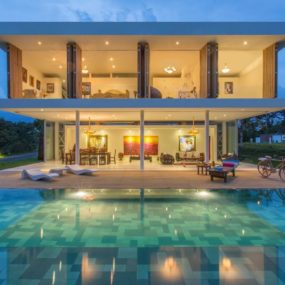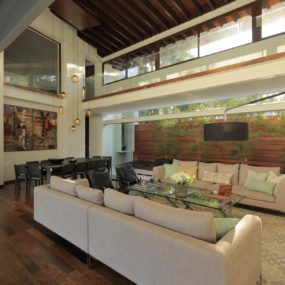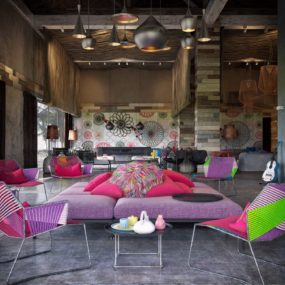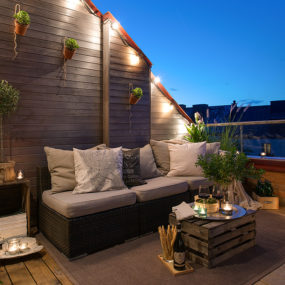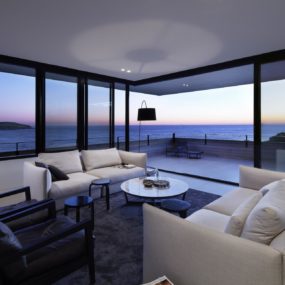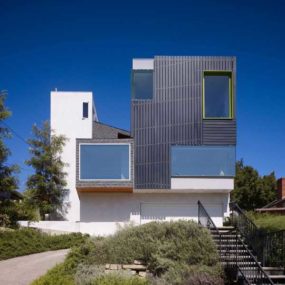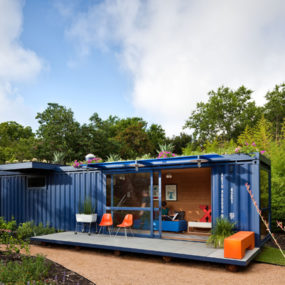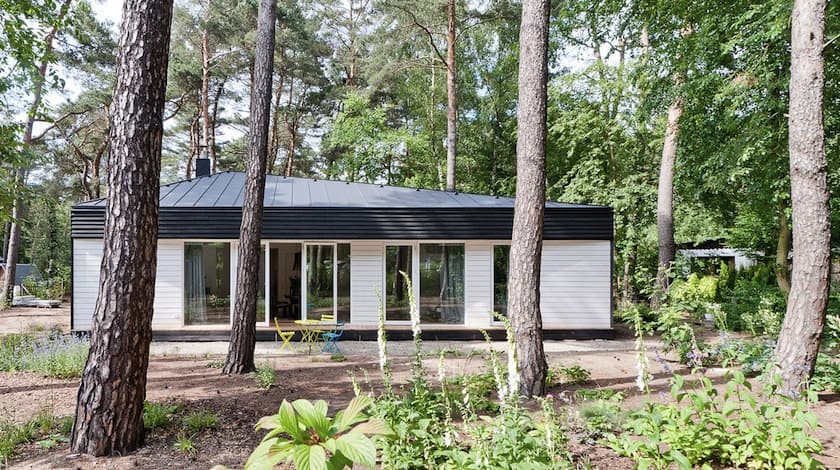
Built on a forested lot in the outer portion of the German city of Potsdam, this chic home for three provides all the necessities in minimal yet comfortable style. Designed by Claim Architecture, the house is undoubtedly meant to be seen from what is technically the rear, but functionally its front side. Facing away from a garage and the street beyond, the true front of the house entertains a small built-in porch that is nearly invisible from afar, with the only indication of its separation being the white color of the walls around it. While the street-facing side of the house has sparse window space and a dark tone, this opposite edge is filled with huge windows doubling as doors and an attractive black/white mix of colors. The house’s roof peaks asymmetrically, and the whole building is mildly angular in a visually pleasing fashion.
Something that sets this residence apart from others is the sheer variety of wood finishes utilized in its design, both inside and out. The floors, interior and exterior walls, countertops, furnishings, and other details of the house all employ different species, fine tuned to the use and placement of each space. About half the house’s floorplan is a main room composed of living and dining areas, with the kitchen, bedrooms, and bathrooms forming an L around it. One bedroom in particular is set apart, enclosed by a three pine interior walls seen nowhere else in the abode. Storage solutions are built into the walls in nearly every room, implemented slightly differently from room to room to fit the individual needs of each.

The front of the house present a single facade from left to right, a slightly curving bank of doors, windows and walls slicing into the straight roofline of the building. The porch formed by this cut is distinguished by its white-painted wall sections and ceiling, vertically delineated by the edges of its windows.
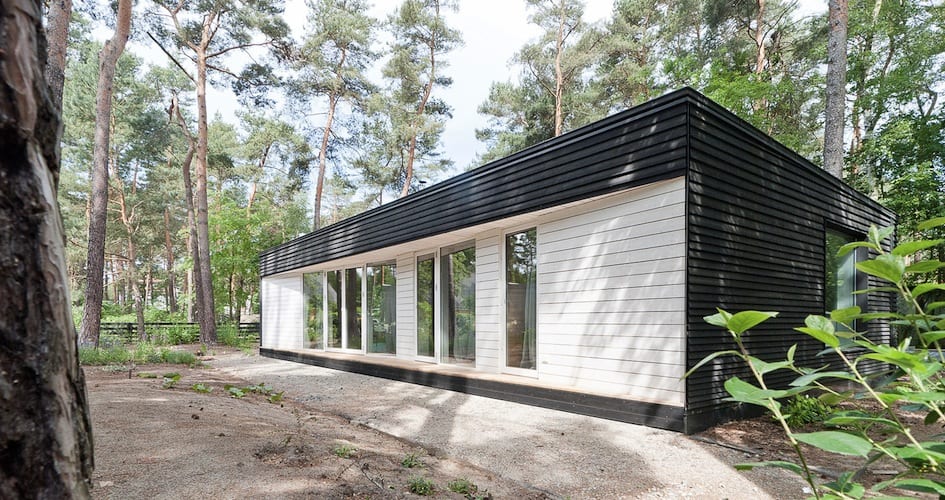
The gravelly rectangular clearing in front of the house provides ample space for hosting guests and outdoor meals, providing a barrier between the house and nature that is not quite man-made but also not quite organic.
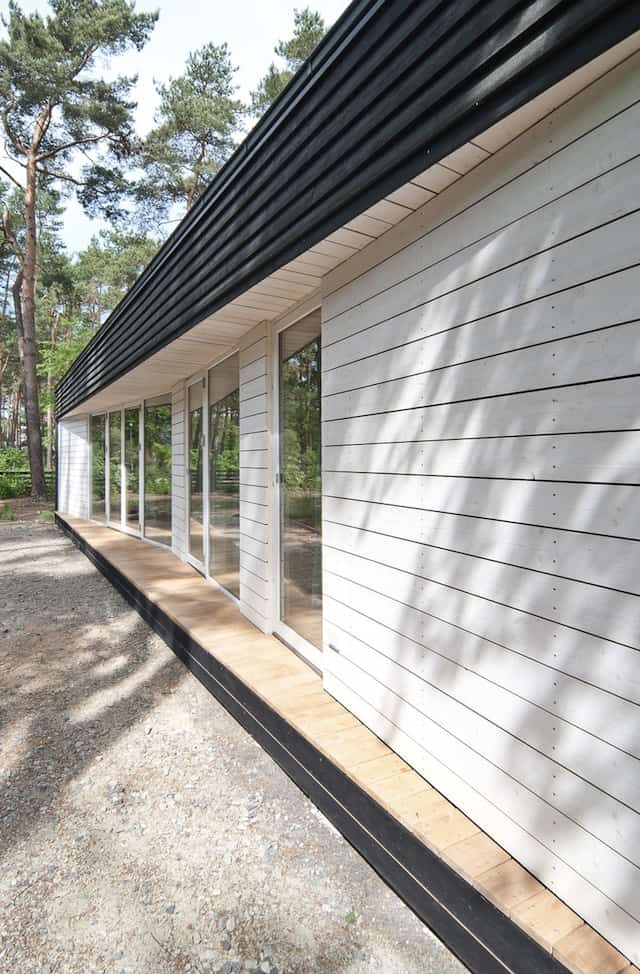
The raised porch itself is thin, but is given its own floor covering unique from the floors of the rest of the dwelling. From far away, the facade seems utterly straight, but a few steps closer reveal the inward curve of the doorways.
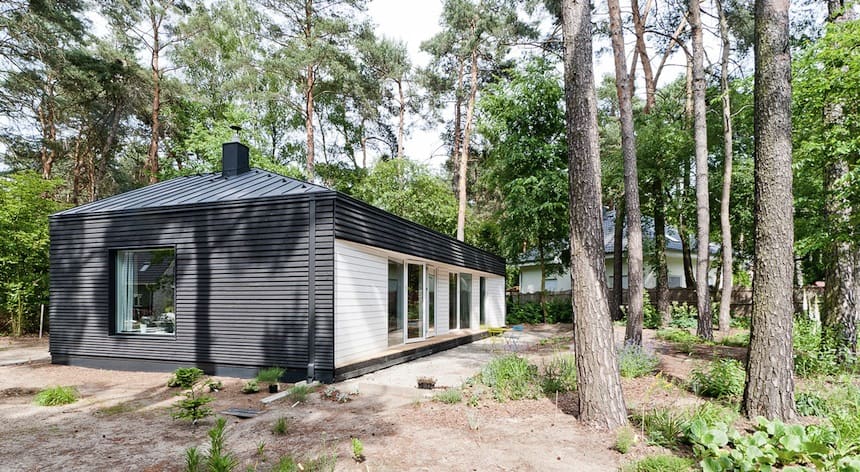
The rest of residence’s exterior is generally much darker than the front, with a flat-black envelope surrounding its rooms at the sides and rear. The home also grows taller towards a peak near its left rear corner, with a number of angled roofline ridges leading up from every edge.

The rear of the dwelling trades wide, uniform windows for seemingly randomly spaced and sized holes in the wooden facade. These windows provide plenty of light to rooms which may not receive any at the front, while also preventing a full view of the interior from the outside of the property.
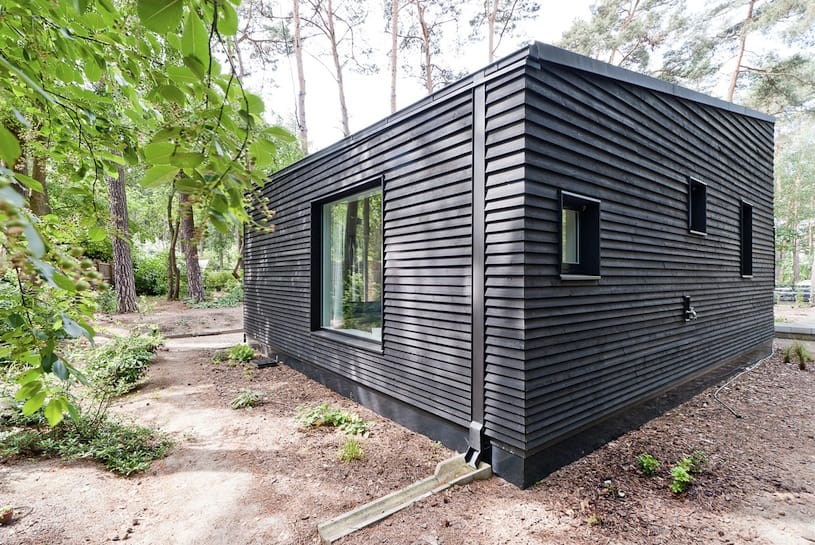
Each side wall is punctuated by a large centered window, one in the living room and the other in the master suite. On the outer edge of the wall, an integrated drainage system disperses water from the roof to prevent erosion, but does so in a way that doesn’t detract from the architecture of the home.
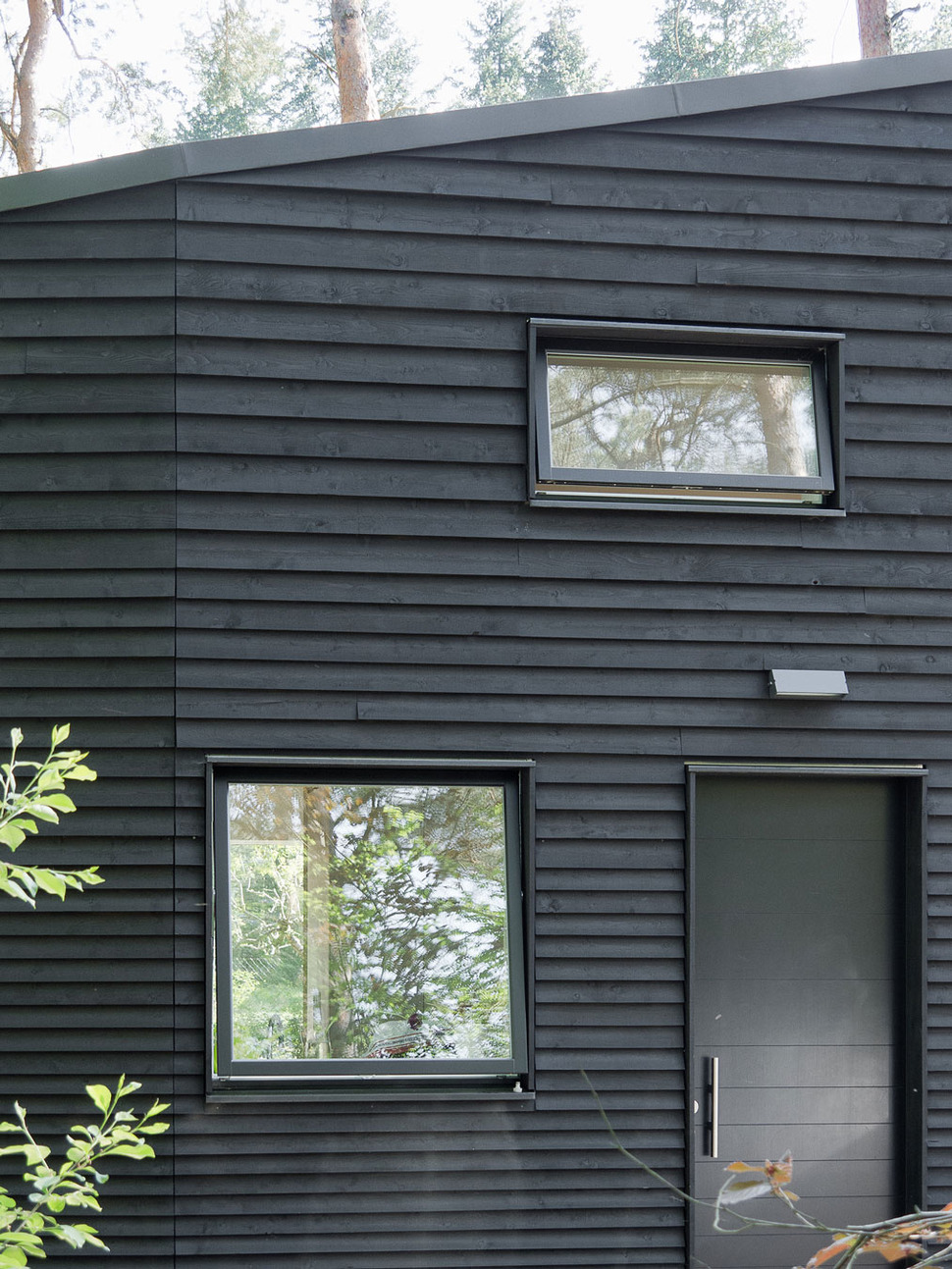
None of the residence’s windows are opened traditionally; the ones at the front act as doors while those at the rear rotate around an axis inside the frame to open the house to air.
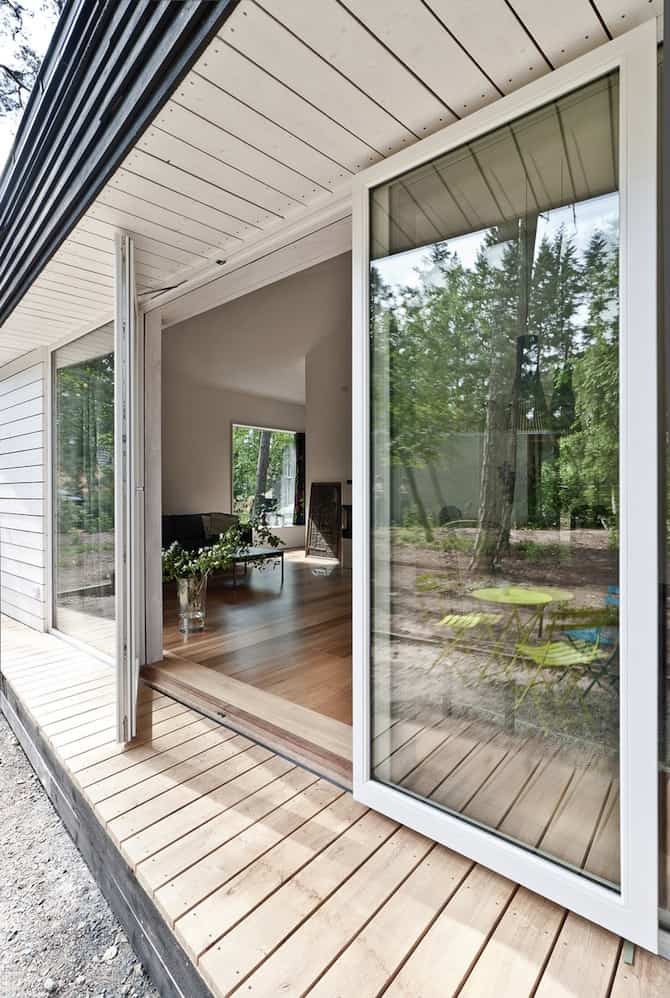
The bright front of the house serves as a fitting entrance, given that the interior mirrors its dichotomy of white paint and light wood tones on the floor.
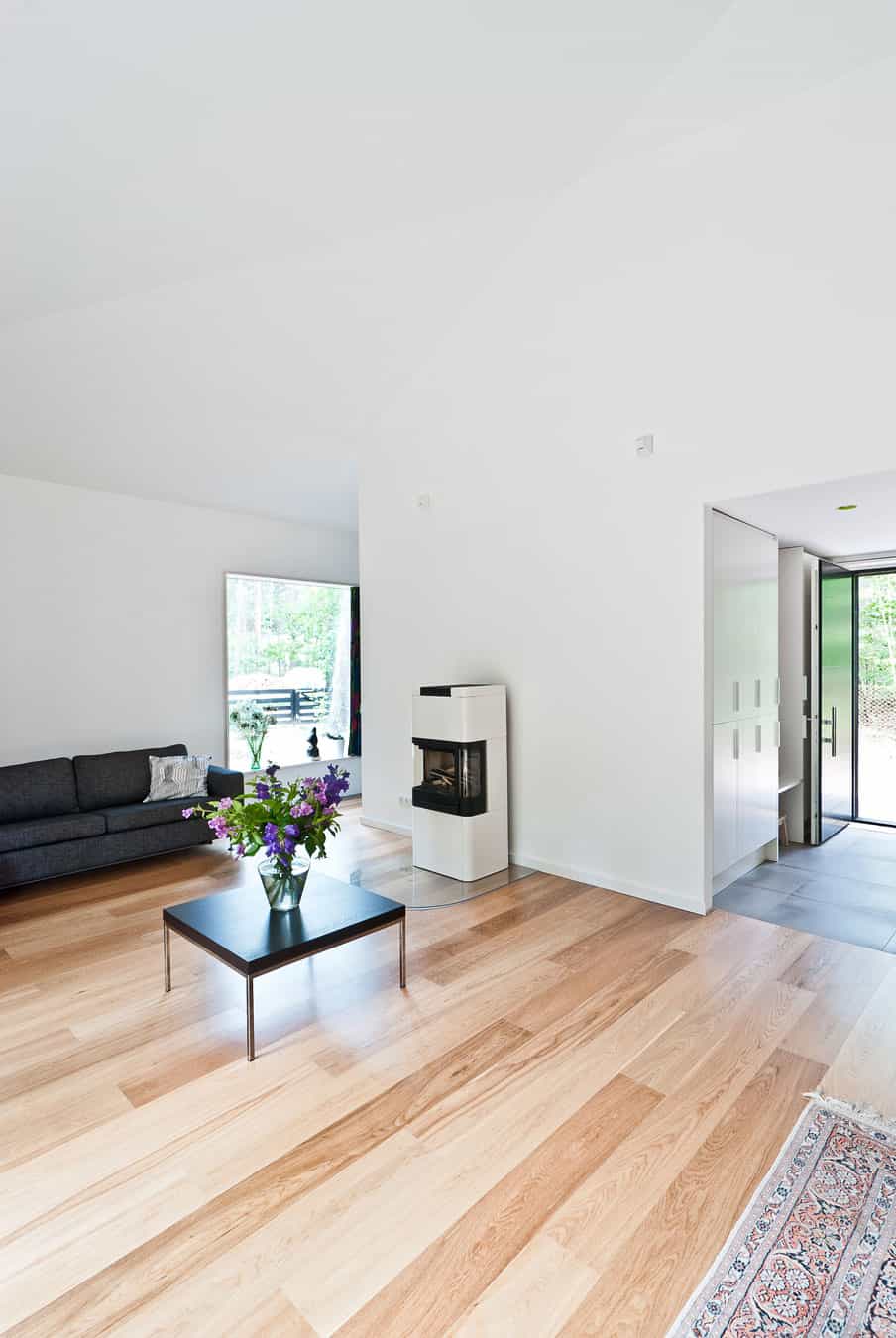
The living room is wide and spacious, aided by a number of architectural and decorative cues. The wide windows surrounding the room bring in light, which is further accented by the cresting ceiling above and the minimal furniture arrangement of the space.
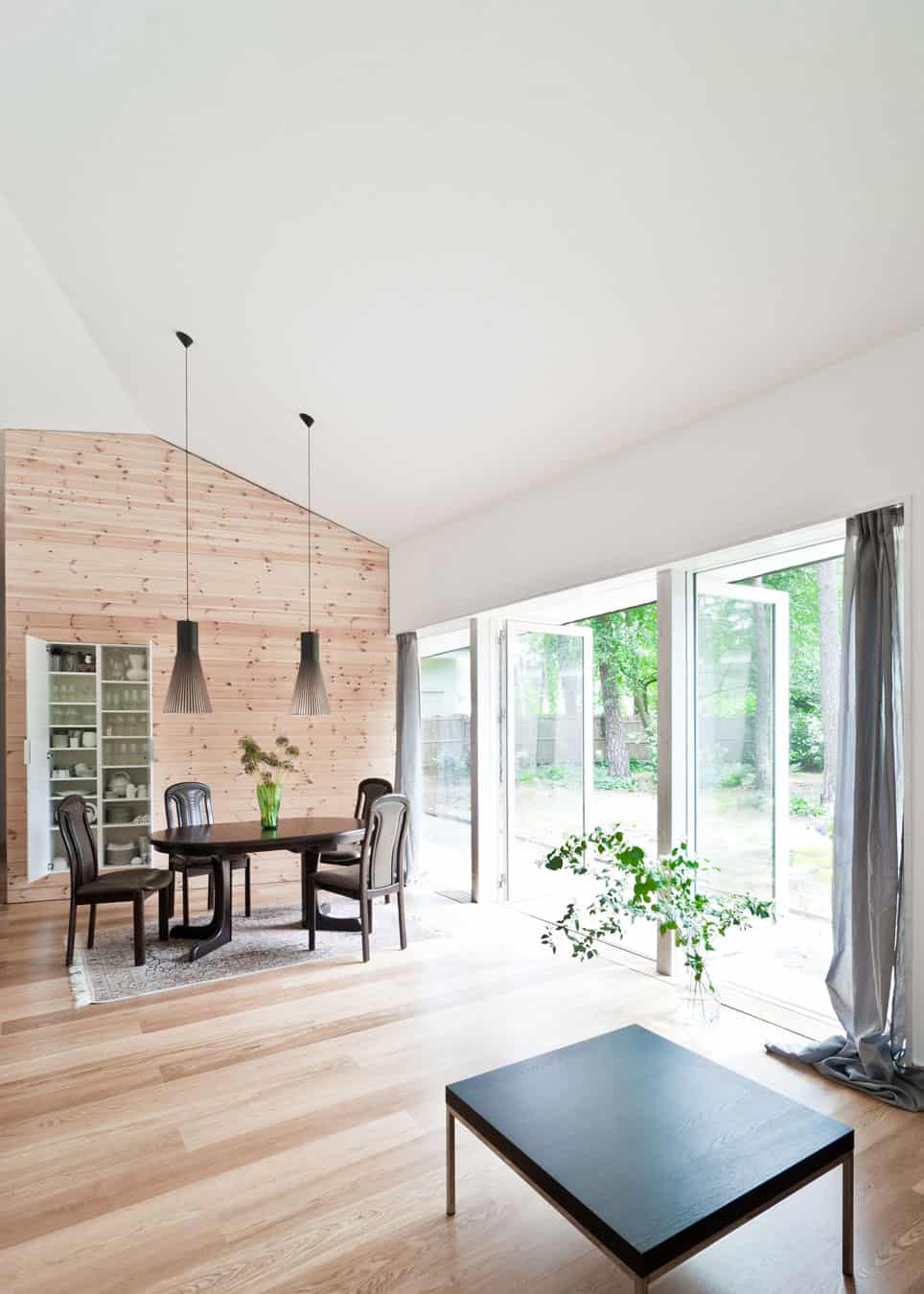
At the other side of the main room is a dining area, framed by a traditional rug underfoot and two elegant contemporary light fixtures hanging overhead. The far wall, punctuated by a white storage cabinet, is finished in pine planks.
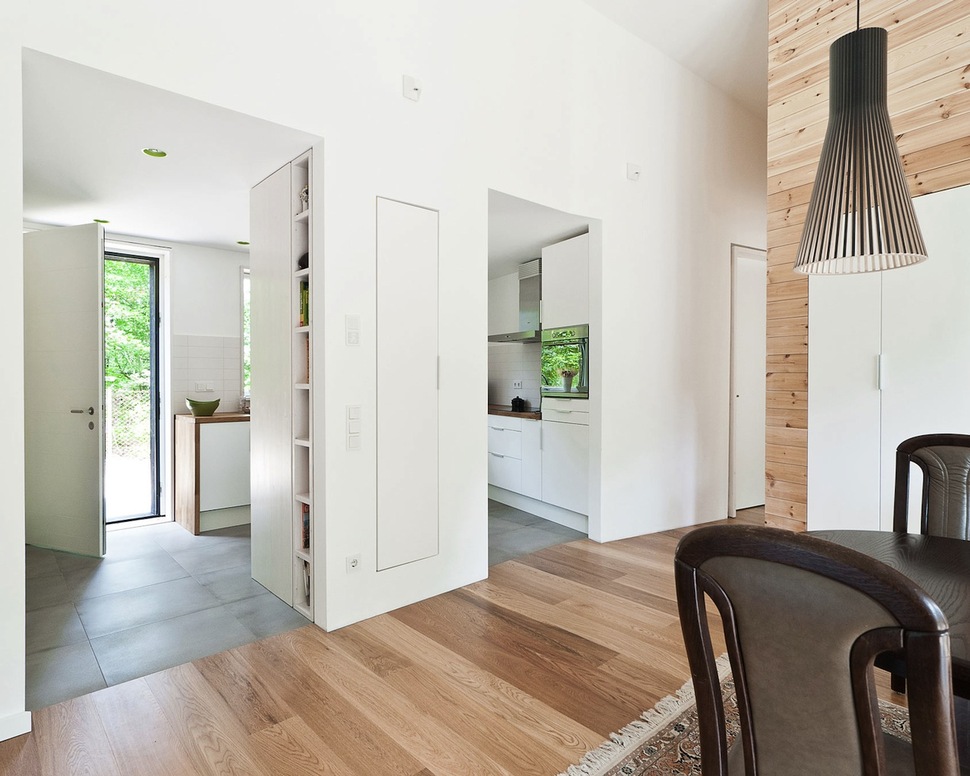
The kitchen, which plays host to the home’s rear entrance, features a variety of tile floor shared with the bathrooms of the abode. The area is divided into two halves by a thick structural column with intelligent integrated shelving and other storage.

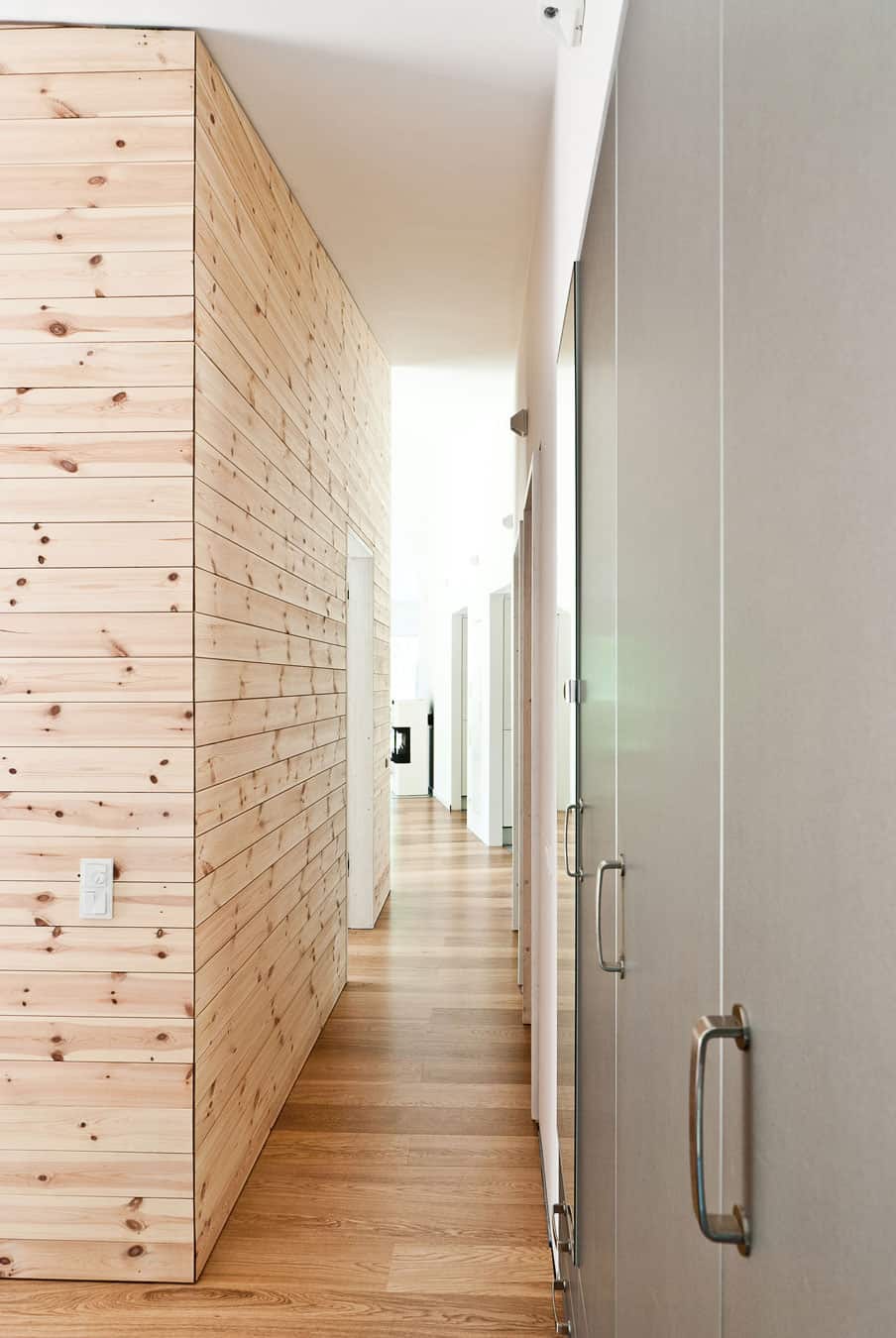
The pine module near the center of the floorplan forms a miniature home of its own, with a bedroom and study area inside and the general exterior shape of a small cabin. Behind it is the master suite, down a hall filled with doors leading to bathrooms and storage.
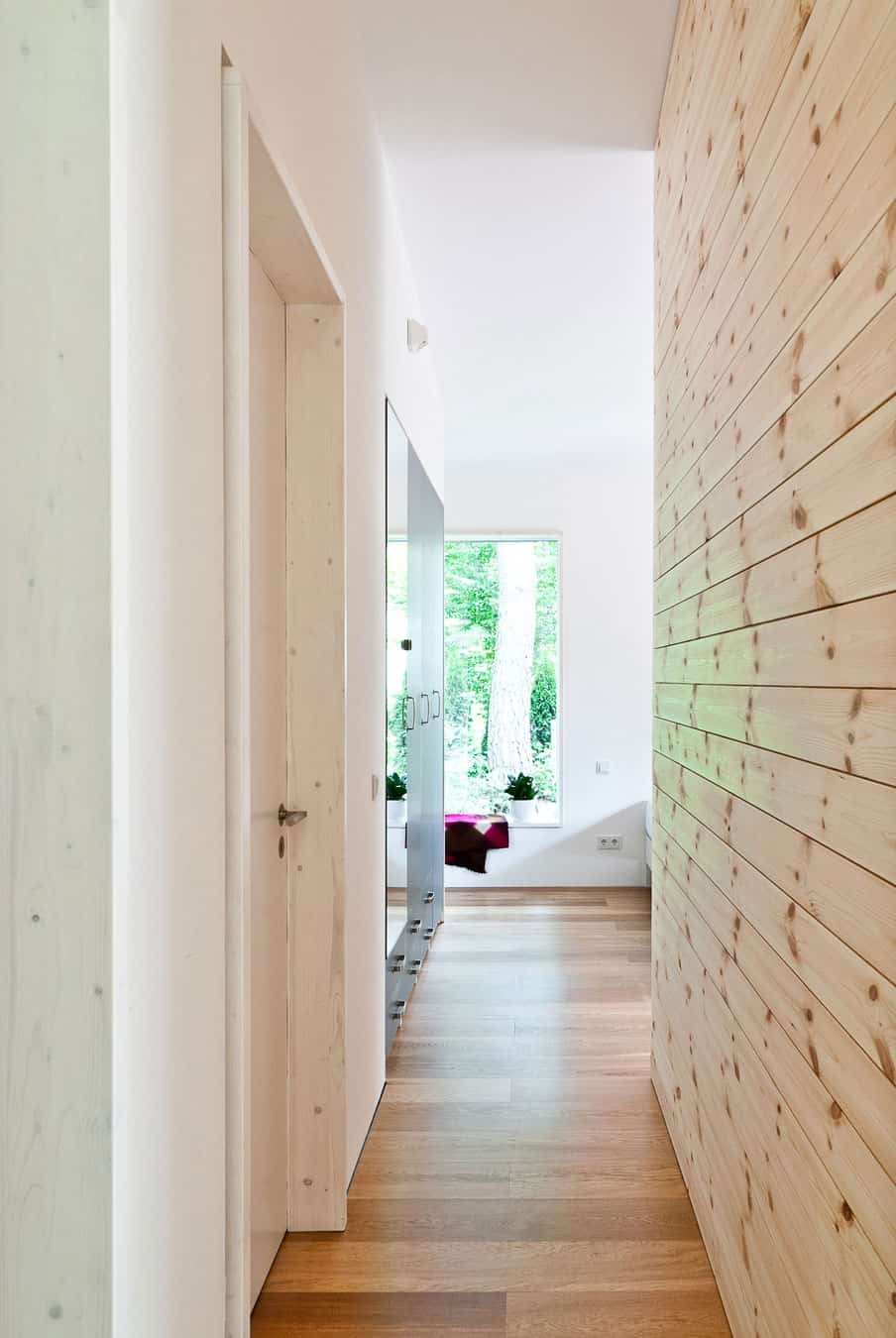
Though the ceilings here are lower than anywhere else inside, they’re still plenty tall enough to let light expand upon entry and fill the room with bright natural illumination. The hallway to the master suite presents perhaps the best demonstration of the variety of woods used inside, with a different finish on the floors, door frames, and pine-bordered bedroom.
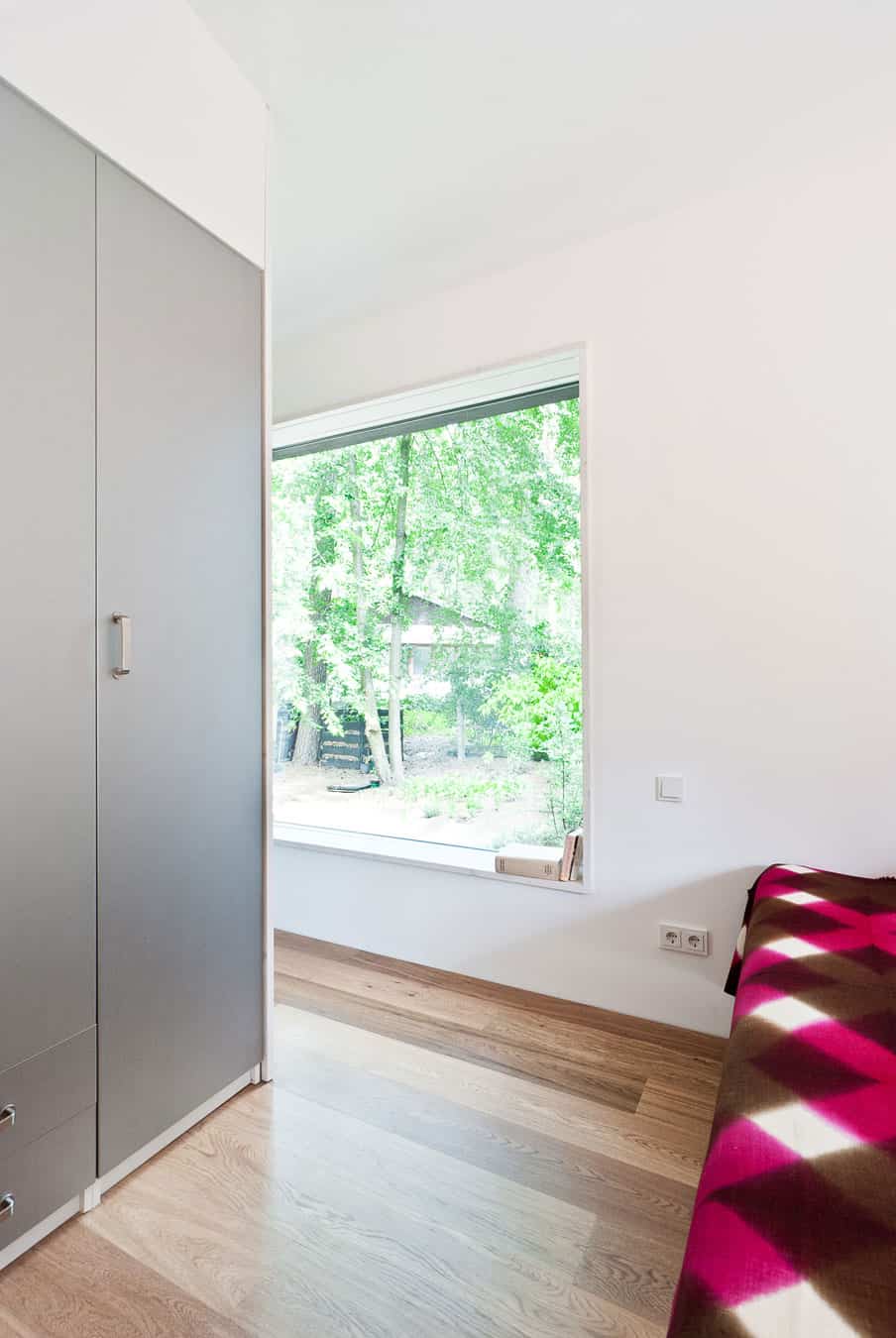
Each bedroom is clean and minimal, fitting the overall feel of the house perfectly. A splash of color here and there gives the space personality, while the overall design remains uncluttered and airy.

There is no door separating the master bedroom from the hallway, and here as well there is no door between the bedroom and its bathroom. However, the bathroom has only one small window, a nod to privacy from those outside.
Claim Architecture


